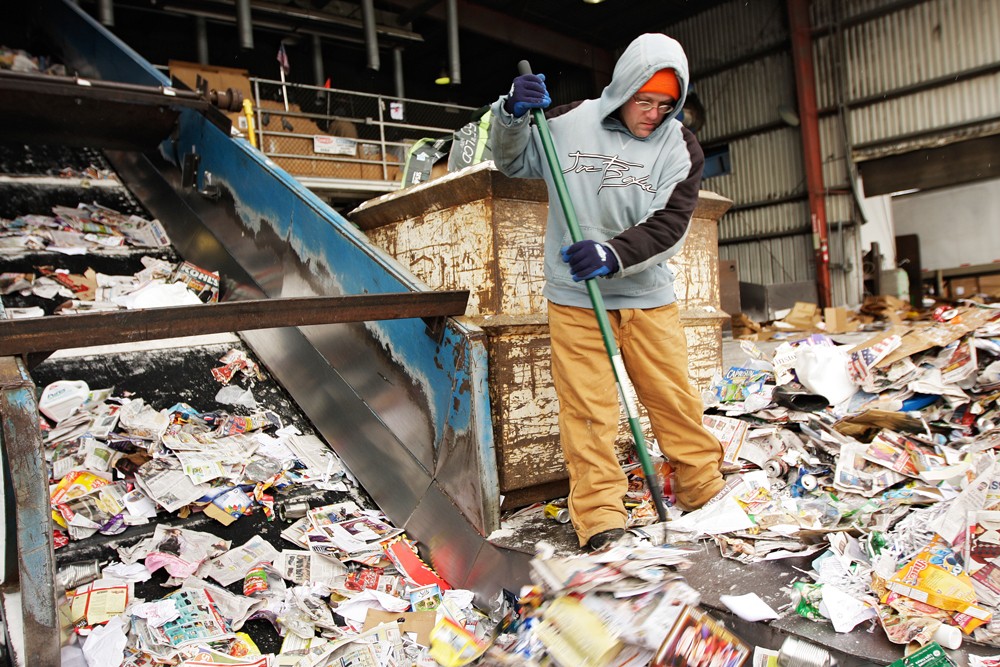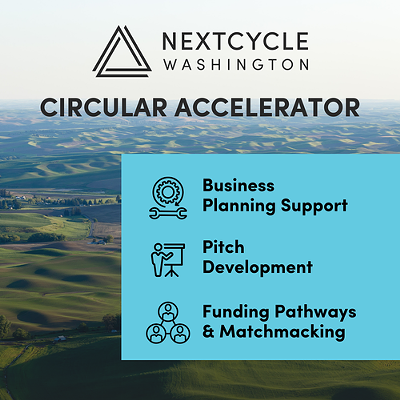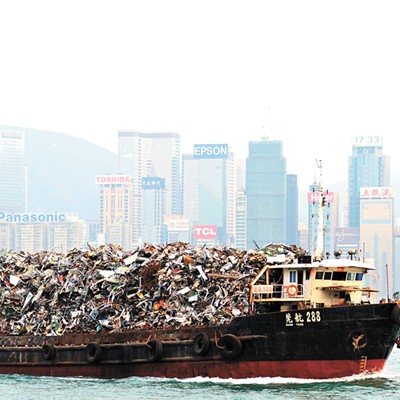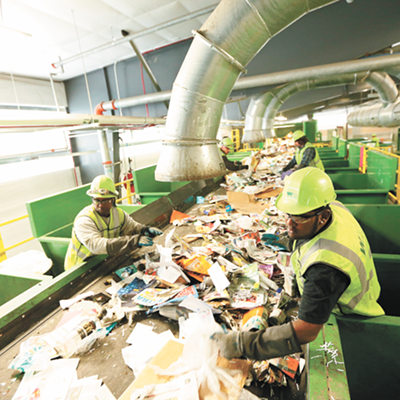The transition is complete. Over the holiday weekend, Coeur d'Alene Garbage Service rolled out the last of its 32,000 recycling bins, as the city transitioned to a new company to haul its bottles, cans and paper from homes to the global recycling market.
It's the most notable change to recycling in Coeur d'Alene in six years, when Waste Management — a national, publicly traded company that previously contracted to haul residents' recyclables — introduced single-stream, a system increasingly embraced by U.S. cities where residents place their discarded paper, cardboard, plastic and aluminum in the same bin.
Single-stream was presented as a more economical approach to dealing with household refuse: by making it easier to recycle, the city could save money on fees associated with sending waste to the regional landfills. Now, both Spokane and Coeur d'Alene are faced with a downturn in the global recycling market.
"Economically, landfilling is cheaper than recycling," says Troy Tymesen, finance director for the city of Coeur d'Alene who helped negotiate the new contract with Coeur d'Alene Garbage.
Chinese demand for the world's paper, plastic and aluminum has dropped off. A strong U.S. dollar has made exporting recyclables less attractive, and the low price of oil has hurt demand for recycled plastic. Neither city is planning a rate increase. But Matt Stern, regional recycling director for Waste Management, says that if the trend continues, residents could be affected.
In 2010, Coeur d'Alene adopted single-stream recycling. By eliminating the need to sort recyclables into different bins, single-stream makes recycling easier, and more people do it.
A year after putting single-stream into place, Coeur d'Alene saw average participation in the city's recycling services jump to 62 percent. Before single-stream, the average participation rate was 27 percent. Spokane started its own single-stream program in 2012, seeing an 80 percent increase in participation. But despite increases in recycling rates, along with recycling's environmental benefits and public desire for the service, Phillip Damiano, owner of Coeur d'Alene Garbage, says that garbage collection keeps his company operational.
"It is becoming more and more evident that [what you can get for recycling] doesn't come close to covering the expense of pulling it out of the waste stream, so it's a deficit," he says.
According to a city staff report, Coeur d'Alene Garbage's successful bid for the 10-year contract was $34,355 a month, lower than Waste Management's bid of $45,604 a month. But the report notes that even though the city will be paying less for the same service, it won't result in lower rates.
"The City's Sanitation Fund is just barely breaking even at this time and the low bid will enable the City to forestall price increases to the City's constituents in the future," reads the report.
The city of Spokane hauls its own recycling and garbage to the SMaRT Recycling Center, operated by Waste Management, for sorting. Marlene Feist, city utilities spokeswoman, says that recycling made about $20,000 a month for the city when it launched single-stream. But now she says that trend has been reversed. In 2014, the city paid nearly $166,000 to have its recyclables processed, which rose to nearly $437,000 the next year.
Feist says the city has automated some services and found efficiencies elsewhere that'll stave off any rate increases for now. "We've been committed to holding utility rates to inflation," she says.
"The cost of treating it as trash is still more expensive," says Feist. Sending recyclables to the city's waste-to-energy plant, which is where the city's garbage is directed, would end up costing more, she says. She also points out that in Washington, unlike Idaho, there are state mandates for cities to recycle their waste.
Although single-stream recycling has increased recycling rates, Bill Moore, president of the recycling consulting firm Moore & Associates, says that it has produced an unanticipated side effect of lowering the quality of recyclables, making it harder for companies to process them into new products.
In 2013, China, a large market for the world's recyclables, launched its "Green Fence" policy to keep low-quality material out of the country. According to federal numbers, the amount of scrap plastic exported from the U.S. to China dropped from 1 million metric tons in 2011 to 814,000 in 2015.
"It made a lot of sense because people were shipping garbage," says Chaz Miller, director of policy and advocacy for the National Waste & Recycling Association. In response, he says that recycling companies in the U.S. have been producing better quality materials. But while he says that prices for paper are improving, there is less demand for recycled material in general, because industries that rely on them are already at or over capacity for raw materials.
Miller addds that recyclables, at the tail end of the production chain, are highly prone to fluctuation.
"Keep in mind one thing," he says. "They are commodities, and commodities go up and commodities go down." ♦






















